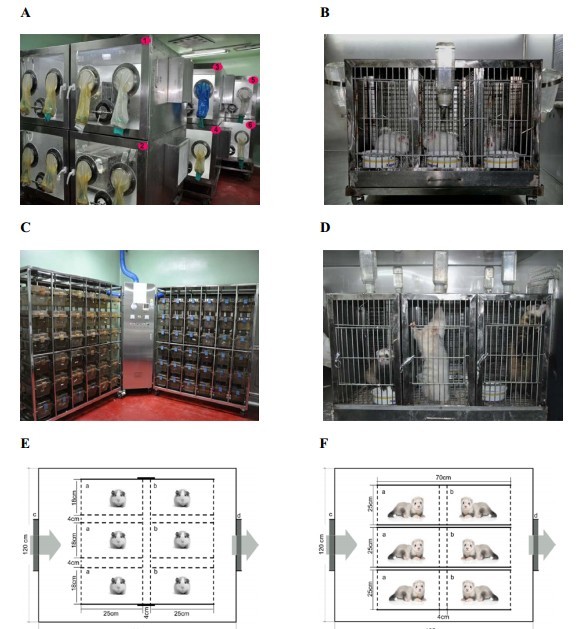恐怖吗?:H5N1病毒与甲流病毒结合或具人际传播能力
| 导读 |
中国研究人员2日在美国《科学》杂志网络版上报告说,他们将H5N1型禽流感病毒和2009年引发流感大流行的甲型H1N1流感病毒结合,发现重组后的某些病毒具备在哺乳动物间传播的能力。这项研究对遏制H5N1病毒的流行具有重要意义。
科学家此前已经知道,当两个病毒共同感染一个宿主时,容易发生基因片... |

中国研究人员2日在美国《科学》杂志网络版上报告说,他们将H5N1型禽流感病毒和2009年引发流感大流行的甲型H1N1流感病毒结合,发现重组后的某些病毒具备在哺乳动物间传播的能力。这项研究对遏制H5N1病毒的流行具有重要意义。
科学家此前已经知道,当两个病毒共同感染一个宿主时,容易发生基因片段的互换,也就是所谓的基因重配。历史上,两种不同流感病毒的基因重配造成了多次全球流感大流行,包括2009年的甲型H1N1流感等。
目前,在自然界中尚未检测到H5N1病毒和甲型H1N1病毒之间有基因重配。为此,中国农科院哈尔滨兽医研究所国家禽流感参考实验室主任陈化兰及其同事调查了两种病毒发生基因重配的可能性以及传播能力。
陈化兰在接受新华社记者采访时说,之所以选择甲型H1N1病毒,是因为它目前在许多地方依然流行,在猪身上也容易检测到这种病毒,因此H5N1病毒与甲型H1N1病毒在自然界碰到的“机会很多”,碰到后就有可能发生基因重配,虽然这一过程在自然界中可能相当缓慢。
研究人员利用H5N1病毒和甲型H1N1病毒,在实验室里构建了含有H5N1病毒HA基因的127种病毒,然后利用小鼠测试了这些病毒的致病率,又利用另一种实验动物豚鼠来评估它们的传播能力。结果发现,“不仅仅是某一种基因的组合,而是有几种基因的组合都非常容易让H5N1病毒获得通过空气传播的能力。”比较好的一点是,这些可传播的病毒对豚鼠来讲都不致命。
陈化兰解释说,他们的研究表明,H5N1病毒一旦获得甲型H1N1病毒的PA基因或者NS基因,它就会具备在哺乳动物之间传播的能力。这意味着该病毒将来有可能具有人际间的传播能力。
过去两年中,对于H5N1病毒传播能力的研究曾引起巨大争议,并曾一度暂停。今年1月,鉴于“自然界的确存在这样的风险,即出现能在哺乳动物中传播的H5N1病毒”,包括陈化兰在内的全球40名相关科学家发表公开信,宣布重新启动相关研究工作。
原文链接:
H5N1 Hybrid Viruses Bearing 2009/H1N1 Virus Genes Transmit in Guinea Pigs by Respiratory Droplet
In the past, avian influenza viruses have crossed species’ barriers to trigger human pandemics by reassorting with mammal-infective viruses in intermediate livestock hosts. H5N1 viruses are able to infect pigs, and some of them have affinity for the mammalian type α-2,6-linked sialic acid airway receptor. By using reverse genetics, we systemically created 127 reassortant viruses between a duck isolate of H5N1, specifically retaining its hemagglutinin (HA) gene throughout, and a highly transmissible, human-infective H1N1 virus. We tested the virulence of the reassortants in mice as a correlate for virulence in humans, and tested transmissibility in guinea pigs, which have both avian and mammalian types of airway receptor. Transmission study showed that both polymerase PA gene and nonstructural protein NS gene of H1N1 virus made the H5N1 virus transmissible by respiratory droplet between guinea pigs, without death. Further experiments implicated other H1N1 genes in the enhancement of mammal-to-mammal transmission, including nucleoprotein (NP), neuraminidase (NA), and matrix (M), as well as mutations in H5 HA that improve affinity for human-like airway receptors. Hence, avian H5N1 subtype viruses do have the potential to acquire mammalian transmissibility by reassortment in current agricultural scenarios.

来源:新华网
 腾讯登录
腾讯登录
还没有人评论,赶快抢个沙发